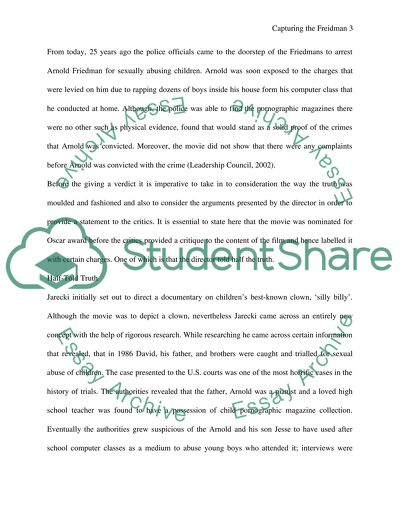Cite this document
(“Why does 'Capturing the Friedmans' divide audiences so often Is this Essay”, n.d.)
Why does 'Capturing the Friedmans' divide audiences so often Is this Essay. Retrieved from https://studentshare.org/visual-arts-film-studies/1620054-why-does-capturing-the-friedmans-divide-audiences-so-often-is-this-the-result-of-its-subject-matter-or-how-the-film-presents-its-material
Why does 'Capturing the Friedmans' divide audiences so often Is this Essay. Retrieved from https://studentshare.org/visual-arts-film-studies/1620054-why-does-capturing-the-friedmans-divide-audiences-so-often-is-this-the-result-of-its-subject-matter-or-how-the-film-presents-its-material
(Why Does 'Capturing the Friedmans' Divide Audiences so Often Is This Essay)
Why Does 'Capturing the Friedmans' Divide Audiences so Often Is This Essay. https://studentshare.org/visual-arts-film-studies/1620054-why-does-capturing-the-friedmans-divide-audiences-so-often-is-this-the-result-of-its-subject-matter-or-how-the-film-presents-its-material.
Why Does 'Capturing the Friedmans' Divide Audiences so Often Is This Essay. https://studentshare.org/visual-arts-film-studies/1620054-why-does-capturing-the-friedmans-divide-audiences-so-often-is-this-the-result-of-its-subject-matter-or-how-the-film-presents-its-material.
“Why Does 'Capturing the Friedmans' Divide Audiences so Often Is This Essay”, n.d. https://studentshare.org/visual-arts-film-studies/1620054-why-does-capturing-the-friedmans-divide-audiences-so-often-is-this-the-result-of-its-subject-matter-or-how-the-film-presents-its-material.


